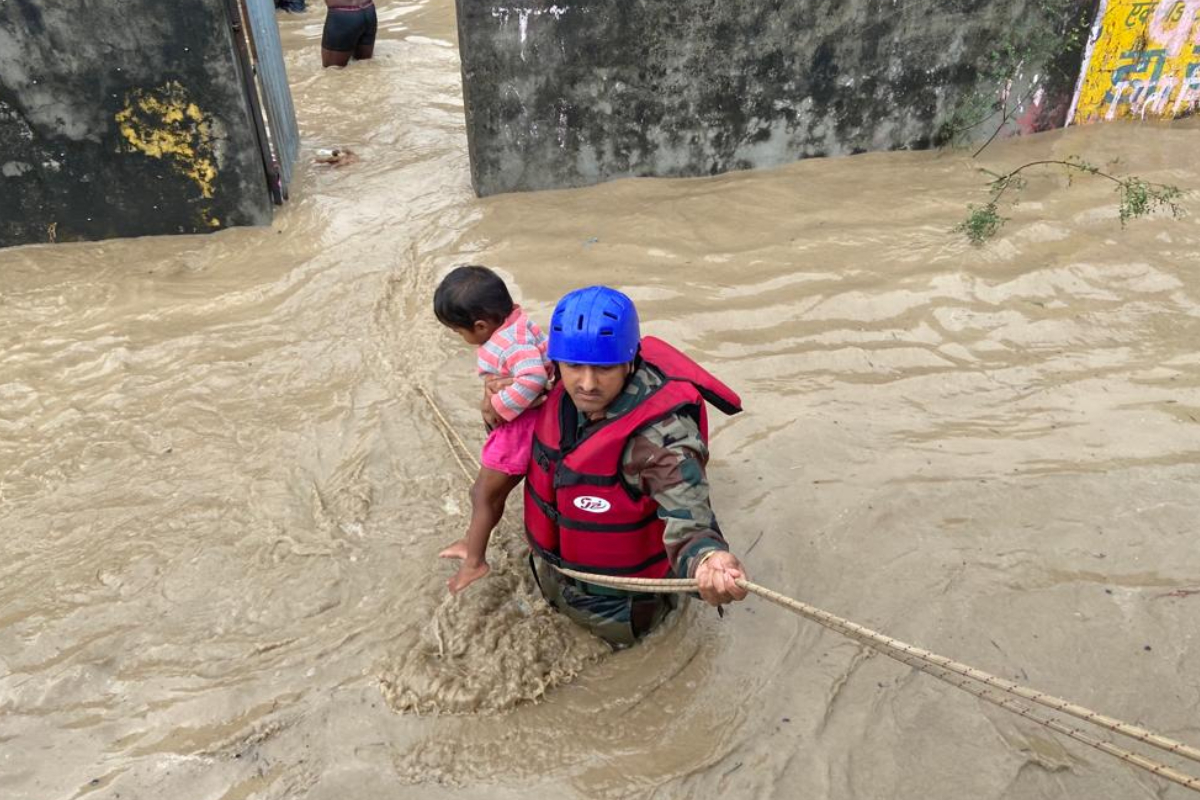Melting Himalayan glaciers have contributed to Pakistan’s horrifying floods, giving us a rough and ready taste of what could happen across the length of the Himalayas. This is an opportunity for India, Nepal and Bhutan to take whatever measures they can to prepare for such devastating events.
Already, we have seen a series of horrifying floods in Uttarakhand in recent years. Each was like a mini version of what is now happening on a catastrophic scale in Pakistan. Also, we saw pretty much unprecedented flood havoc below the Western Ghats in Kerala last year.
These are not natural disasters. They are part of the collapse of climatic systems and ecosystems that global warming will inevitably cause. It is just the beginning.
It could get much worse as methane replaces carbon dioxide as the most dangerous greenhouse gas. Ironically, it was global warming caused by carbon dioxide emissions that thawed enough permafrost in places like Siberia to release methane trapped in layers that had remained frozen for centuries.
Pakistan’s current disaster has been unfolding since mid-June, but it has become catastrophic over the past few days. According to some Pakistani leaders, a third of their country is now underwater, up to 1,500 have been killed, a million houses damaged or destroyed, and perhaps 50 million people displaced from their homes. That is substantially more than all those who were displaced during the Partition.
Paying for industrial regions
The tragic irony of what we face sitting below the Himalayas in South Asia is that we will pay a horrendous cost for environmental collapse even though the subcontinent has overall contributed far less to causative greenhouse gas emissions than the OECD and some other countries. India has only become one of the largest emitters (far behind China) in the last few decades. It is the global greenhouse effect that is mainly responsible.
Temperature increases in Siberia and other Arctic regions are already startlingly higher than the global average. The same is predicted for the Himalayas. In fact, if the planet’s average temperature rises 2 degrees above the pre-industrial level, the average temperature of the Arctic and the Himalayas could rise by 5 degrees.
The reasons are pretty obvious. These areas were largely covered by ice, which reflects the heat of sunlight away from the Earth. The blue water of the Arctic would absorb heat from sunlight instead, the way the Pacific is currently doing at an astonishing level.
As for the Himalayas, without the reflective effect of ice and snow, and their cooling effect in the first place, the very height of the mountains will expose them to greater heating – especially if warming kills the tree cover.
Of course, temperature levels may still be lower in the mountains than in the plains, but the difference from the past is likely to be greater than the difference in the plains.
Forests are gold
Forests will play a major role. They cover the mountains, absorb carbon dioxide, generate oxygen, and attract rain clouds. Existing forests must be protected, and forestry must be undertaken on an emergency footing, especially in areas closer to the moraines of glaciers.
Of course, given the trends in global warming, there will still be flash floods from glacier melt. These will inevitably carry away some tracts of forests. Yet, we must do all we can to limit the damage, and delay the onset of unlivable conditions.
One witnessed tracts of forest in places like Germany this summer, in which trees were brown and leafless, as if they were dying. So, studies should be undertaken at forestry institutes on which tree species could be seeded in areas that have become too hot for the tree species that currently cover them.
Those who live in the flood plains of mountain rivers – particularly those that rise out of glaciers – should be warned of the dangers, and encouraged to shift to higher ground. Flood channels should be dug to provide flood water with a path away from inhabited areas.
Pools within glaciers
Such floods occur when large pools of water accumulated within a glacier find a channel out, as an edge or front of a glacier collapses.
In the northern hemisphere, August and September are the most dangerous, for the ice that forms or hardens during winter melts to some extent through the summer, before the ice begins to form afresh in October.
Amid global warming, large pools of water have been formed in glaciers everywhere, expanding through the summer melt. Sooner or later, those entire glaciers will go. In fact, a recently published study predicts that the melting of Greenland’s trillions of tonnes of ice is now unstoppable, even if no further greenhouse gas emissions are released.
Two of the most frightening pools have formed in Antarctica. As the oceans heat up (the Pacific has registered amazingly high temperatures this year), the Antarctic ice sheet is being worn down from below. Sea levels across the globe would rise noticeably if the western ice sheet of Antarctica collapsed. The same goes for Greenland’s ice.
David Devadas is a journalist and security, politics and geopolitics analyst.
Disclaimer: Views expressed above are the author’s own












